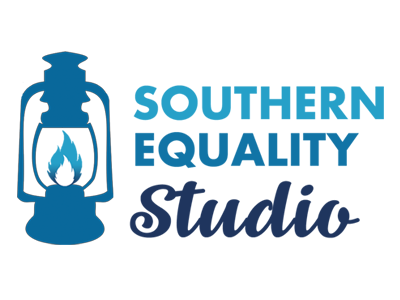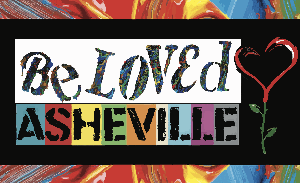ACCESSIBILITY

ACCESSIBILITY STATEMENT & STRATEGY
ArtsAVL believes the arts play a unique and essential role in the prosperity of all Buncombe County residents. The creation and experience of cultural and artistic expression contribute to both individual and community well-being. Arts and culture can be a vehicle for individual growth and healing, spark important conversations, spur social change, and make our communities strong, healthy, and above all more accessible.
Arts accessibility to us means that all people — regardless of race, ethnicity, age, gender, sexual orientation, zip code, health and ability status, or any other consideration — have equal and inviolable dignity, value, and opportunity to participate justly, fairly, and fully in the arts in our community. As the leader for the arts in Buncombe County and as a steward of public and private funds, ArtsAVL embraces this unique opportunity to push for accessible best practices and ensure that all residents of Buncombe County have access to quality arts experiences.
One way we are championing the use of accessible best practices is through sharing the terms and resources listed in the sections below. This is a growing list, so please feel free to email us at hello@artsavl.org if you have other resource suggestions.
Glossary of Terms
FOUNDATIONAL TERMS
Diversity is the practice or quality of creating a community comprising people of different ages, cultural backgrounds, geographies, physical abilities and disabilities, religions, sexes, gender identities, sexual orientations, etc. (SAMHSA)
Diversity is all the ways that people are different and the same at the individual and group levels. Even when people appear the same, they are different. Organizational diversity requires examining and questioning the makeup of a group to ensure that multiple perspectives are represented. (AAM)
Equality means resources are provided so that all individuals have equal access (each person receives exactly the same resources in exactly the same amount). (SAMHSA)
Equity means that resources are distributed based on the tailored needs of a specific audience. Equity recognizes that some communities will need more—or different—access compared to other communities. (SAMHSA)
Equity is the fair and just treatment of all members of a community. Equity requires commitment to strategic priorities, resources, respect, and civility, as well as ongoing action and assessment of progress toward achieving specified goals. (AAM)
*Equity and equality do not have the same meaning. Equality is based on giving everyone exactly the same resources, while equity involves distributing resources based on the tailored needs of a specific population. (SAMHSA)
Accessibility is giving equitable access to everyone along the continuum of human ability and experience. Accessibility encompasses the broader meanings of compliance and refers to how organizations make space for the characteristics that each person brings. (AAM)
It is when we modify information, architecture, devices or methods to allow easier access by people with disabilities, we are making those items accessible. Examples include: providing sign language interpreters for a poetry reading; building an accessible ramp for a theatre stage, audio-describing a film; and/or providing technical aids for access to a computer. (SouthArts)
Inclusion is the act or practice of behaviors and social norms that ensure people feel welcome. In the workplace, inclusion is?the achievement of a work environment in which all individuals are treated fairly and respectfully, have equal access to opportunities and resources, and can contribute fully to the organization’s success. (SAMHSA)
Inclusion refers to the intentional, ongoing effort to ensure that diverse individuals fully participate in all aspects of organizational work, including decision-making processes. It also refers to the ways that diverse participants are valued as respected members of an organization and/or community. (AAM)
BIAS TERMS
Bias is an inclination or preference that interferes with impartial judgment. (SAMHSA)
Conscious bias, or explicit bias, refers to the attitudes or beliefs someone knowingly holds. In other words, individuals are aware of their attitudes or beliefs and express them directly. (SAMHSA)
Unconscious bias, or implicit association/bias, refers to unintentional or automatic mental associations an individual has. Unconscious bias operates outside of a person’s awareness and may not directly correlate with their beliefs and values. Unconscious bias is expressed indirectly since it seeps into a person’s attitudes and behaviors, causing an individual to make assumptions based on limited information to fill in gaps and make decisions. (SAMHSA)
Microaggressions are everyday verbal, physical, and symbolic insults and slights, whether intentional or unintentional. ?(SAMHSA)
RACE AND ETHNICITY TERMS
Antiracism is the policy or practice of actively and consciously opposing racism and promoting racial equity. (SAMHSA)
ALAANA is an acronym that stands for African, Latinx, Asian, Arab, and Native American. (GIA)
BIPOC is an acronym that stands for Black, Indigenous, and people of color. (SAMHSA)
Ethnicity is a set of cultural and linguistic traits that individuals belonging to a particular social group share.? (SAMHSA)
People of color (POC) is used primarily in the United States to describe individuals who are not White. (SAMHSA)
Prejudice is an unfavorable belief formed without basis. It is a prejudgment or unjustifiable attitude of one individual or group toward another. (SAMHSA)
Race is a set of traits that define an individual or group of individuals as belonging to a particular social category. Like gender, race is a “social construct,” meaning that how racial groups are defined and how people are assigned to them varies dramatically across countries, cultures, and historical time.? (SAMHSA)
Racism is a complex system of beliefs and behaviors that result in the oppression of people of color and benefit the dominant group. (SAMHSA)
Racial equity is the societal condition in which the distribution of resources and opportunities is neither determined nor predicted by race, and in which structures and practices in society provide true fairness. (SAMHSA)
Social justice is a vision of a society that distributes equal resources to all individuals. (SAMHSA)
Systemic racism is a form of racism that is embedded into the complex system and structures of an organization, society, etc., and institutionalized procedures or processes that disadvantage people of color, perpetuating racial inequality. (SAMHSA)
Undocumented is a foreign-born person living in a country without legal citizenship status. (SAMHSA)
GENDER IDENTITY- AND SEXUAL ORIENTATION-RELATED TERMS
Several of the definitions in this section come from the Sexual Orientation, Gender Identity & Expression Glossary of Terms by the SAMHSA Center of Excellence on LGBTQ+ Behavioral Health Equity.
Cisgender refers to a people whose assigned sex at birth aligns with their gender identity. (SAMHSA)
Gay refers to a person who is attracted to people of the same sex. It often refers to men who are attracted to other men. (SAMHSA)
Gender is a set of socially constructed characteristics, such as norms and behaviors, typically associated with being masculine, feminine, androgynous, or other. (SAMHSA)
Gender bias is behavior that shows favoritism toward one gender over another. Most often, gender bias is the act of favoring men and/or boys over women and/or girls. (SAMHSA)
Gender expression is the physical manifestation of gender identity through clothing, hairstyle, voice, body shape, etc.? (SAMHSA)
Gender identity is one’s internal sense of being a man, a woman, neither of these, both, or another gender(s). Gender is a social—not biological—construct. (SAMHSA)
Heteronormativity is the assumption that heterosexuality is natural, ideal, or superior to other sexual preferences. (SAMHSA)
Lesbian refers to a woman who is attracted to other women. LGBTQ+ is used as an umbrella term to identify lesbian, gay, bisexual, transgender, and queer or questioning individuals as a group. Typically, this abbreviation describes a person’s sexual orientation or gender identity, underscoring the diversity of sexuality- and gender identity-based cultures. (SAMHSA)
LGBTQ+ can also refer to individuals who are non-heterosexual or non-cisgender, instead of exclusively to people who are lesbian, gay, bisexual, or transgender. (SAMHSA)
LGBTQIA is an abbreviation that stands for lesbian, gay, bisexual, transgender, queer or questioning, intersex, and asexual and/or ally. (SAMHSA)
Misgendering is referring to or using language to describe a transgender person that doesn’t align with their affirmed gender—for example, calling a transgender woman “he” or “him.” (SAMHSA)
Non-binary refers to a person whose gender is neither only male nor only female. (SAMHSA)
Pronouns are the words that stand in for other words. Because many personal pronouns have gender (e.g., she, her), people generally like others to use pronouns that match their gender. In addition to “she/her,” personal pronouns include “he/him” and gender-neutral pronouns, such as “ze/hir” or “they/them.” Some people use specific pronouns, any pronouns, or none at all. (SAMHSA)
Queer embraces a range of genders and sexualities who may not identify with a specific LGBT+ label. It acknowledges the fluidity of gender and sexuality, including people who are not exclusively straight and/or non-binary people. Previously used as a slur, this term is now used by choice and with pride by parts of the LGBTQ+ community. (SAMHSA)
Sex assigned at birth is the biological category (female, male, or intersex) given at birth based on biological characteristics (i.e., physical anatomy and hormones). (SAMHSA)
Sexual orientation is a person’s physical, romantic, emotional, and/or other forms of attraction to others.?(SAMHSA)
Transgender refers to individuals whose gender identity differs from the gender they were thought to be when they were born. Use the name and personal pronouns transgender people use for themselves. If you aren’t sure which pronouns to use, ask politely. (SAMHSA)
Two-spirit is used by some Native Americans to refer to Native Americans who have both a male and a female spirit, or qualities of both genders. While the term was coined in 1990, it is an umbrella term to encompass various terms used for generations in some Native American tribes to identify people who embodied two or more, or alternate, genders. Not all Native Americans or Native American tribes use or recognize the term. (SAMHSA)
DISABILITY TERMS
Accessible Routes are continuous unobstructed paths connecting all accessible elements and spaces of a building or facility. Interior accessible routes may include corridors, floors, ramps, elevators, lifts, and clear floor space at fixtures. Exterior accessible routes may include parking access aisles, curb ramps, crosswalks at vehicular ways, walks, ramps, and lifts. (SouthArts)
Alternative Formats are information that is regularly provided by an organization in visual or audible formats in alternative formats such as computer diskettes, tape recordings, Braille or large print, or captioning. (SouthArts)
American Sign Language (ASL) is the major language used by the American Deaf population. Its medium is visible through hand movements and facial expressions rather than aural. ASL has its own vocabulary, idioms, grammar, and syntax different from English. (SouthArts)
Assistive Listening Systems (ALS) enhance the sound for people who are hard of hearing to assist them with amplification and clarity. ALS’s enable an individual who benefits from amplification to focus directly on the sound source without having to contend with background noise that can make it difficult to concentrate on conversation. Options to consider include FM systems, infrared or induction loop technologies. The speaker talks into a microphone or transmitter and the listener either uses the T-switch on their hearing aid, or wears a receiver designed to work with the assistive listening device. (SouthArts)
Assistive Technology are devices used by people with disabilities to compensate for functional limitations and to enhance and increase learning, independence, mobility, communication, environmental control and choice. Devices may include voice activated computer software, simple to sophisticated wheelchairs or mobility aids, screen reading computer software that reads out loud information from a computer screen, or a mouth or head stick for painting. (SouthArts)
Audio description is a narration of a live theatre event, visual arts exhibit at a museum, television, film or video program’s visual elements for persons with visual disabilities. Audio description is inserted in the natural pauses of a program’s dialogue, and can be used to describe visual elements such as body language, settings, and actions made. (SouthArts)
Auxiliary Aids and Services include a wide range of services and devices that promote effective communication, according to ADA regulations. These services and devices include:
- Qualified interpreters or other effective methods of making aurally delivered materials available to individuals with hearing impairments
- Qualified readers, taped texts, or other effective methods of making visually delivered materials available to individuals with visual impairments (SouthArts)
Braille is a system of exact translation of printed letters into raised dots, which can be read by fingertips by people who are blind. Braille can be used in exhibition labeling, publications, and signage. (SouthArts)
Captioned is a video or film program with subtitles reflecting the content of the spoken or descriptive material. (SouthArts)
- Closed Captioning: Captions are text superimposed over video for the benefit of viewers who are deaf and hard-of-hearing. Closed captions are hidden (encoded) as a data within the video signal and must be decoded to be visible. Captions are designed to convey on- and off-screen effects, speaker identifications and other information helpful to people who are deaf and hard of hearing. (SouthArts)
- Open Captioning: Open Captioning places the text on screen in a black reader box at all times. (SouthArts)
- Real-time Captioning: Roll-up captions that are created and transmitted at time of broadcast origination. (SouthArts)
- Theatrical Open Captioning: Open captioning of live theatre performances. This technology has enabled many people to experience the joy of theatre for the first time. (SouthArts)
Commercial Facilities are privately owned, nonresidential facilities involved in commercial activity, such as a factory, warehouse, corporate office building or other facility in which employment may occur, according to Title lll regulations of the ADA. (SouthArts)
Disability, as defined by the Americans with Disabilities Act (ADA), is a physical or mental impairment that substantially limits one or more major life activities, which the law defines as including seeing, hearing, eating, sleeping, walking, standing, sitting, interacting with others, and working, among other activities. Many individuals with disabilities prefer to be called individuals with disabilities or people with disabilities, but some do also refer to themselves as “disabled.” Some people also prefer the term “differing abilities” to highlight the fact that all individuals have different abilities (vs. some having abilities and others not having those abilities).? (SAMHSA)
The following are recommendations to remember and implement when engaging with a person with a disability.
- Never use the word “handicapped.” The correct word is “disabled.”
- Offer assistance if asked, but do not insist.
- Do not hold on to a person’s scooter. It is a part of the person’s space and touching it or leaning on it are both inappropriate and dangerous.
- Do not pet or play with a working guide or service dog.
- Talk directly to a person, not to an attendant or third party.
- If a sign language interpreter is involved, speak directly to the person who is deaf, not the interpreter.
- If requested to guide a person who is blind, let them take your arm. If you encounter steps, curbs or other obstacles, identify the obstacle and pause briefly before proceeding. (SouthArts)
Interpreters translate from spoken language to American Sign Language (ASL) and visa versa. People who are deaf or hard of hearing often request interpreters or translators in order to participate in docent tours, lectures, presentations, or events. (SouthArts)
International Symbols of Accessibility are access symbols can be found at the Disability Access Symbols Project Advertisements, conference and program brochures, flyers, press releases, and membership forms, are examples of materials that may display these symbols to advertise the physical access of a facility, program or meeting. (SouthArts)
Large Print brochures and educational materials are for individuals with partial sight. On a personal computer, font size 16 or greater will produce large print. (SouthArts)
Major life activities include such activities as caring for oneself, performing manual tasks, walking, seeing, hearing, speaking, breathing, learning, and working. (SouthArts)
Neurodiversity is the idea that neurological differences, such as autism or attention-deficit/hyperactivity disorder (ADHD), are the result of normal, natural variation among humans. (SAMHSA)
Program Accessibility is required under the ADA, Title II standard, which requires facilities to be readily accessible to and usable by people with disabilities. To become accessible a facility may need to alter an existing facility, acquire or construct additional facilities, or relocate a service or program to an accessible facility. (SouthArts)
Public Accommodation is a private establishment (for profit or nonprofit) that fits one of twelve categories specified by the Department of Justice in ADA regulations. It includes hotels, restaurants, theaters, museums, retail stores, private schools, banks, doctor’s office, and health clubs. (SouthArts)
- Qualified Individual with a Disability is a person who meets legitimate skill, experience, education, or other requirements of an employment position that he or she holds or seeks, and can perform the essential functions of the position with or without reasonable accommodation. In a nonemployment context, a qualified person with a disability meets the definition of a person with a disability and meets the essential eligibility requirements for a program, activity, service or benefit offered by a public entity. (SouthArts)
- Qualified Interpreter is an interpreter who is able to sign to the individual who is deaf what is being said by the hearing person and who can voice the hearing person what is being signed by the individual who is deaf. This communication must be conveyed effectively, accurately, and impartially through the use of any necessary specialized vocabulary. (SouthArts)
Readily Achievable is when an access barrier is removed without much difficulty or expense. Under Title III of the ADA, places of public accommodation are required to remove from public areas barriers to access. (SouthArts)
Reasonable Accommodation means making any change or adjustment to a job or work environment that permits a qualified applicant or employee with a disability to apply for a job or to enjoy the benefits and privileges of employment equal to other employees without disabilities. This may include providing readers, sign language interpreters, or modifying the physical environment to make it accessible. (SouthArts)
Scripting is the provision of a written script of a video, film or a performance as an accommodation for a person who is hard of hearing or deaf. (SouthArts)
Sensory Seminars/Tours are offered at performing arts performances. These pre-performance seminars allow patrons to feel props, set pieces, and costumes in order to give them a better understanding of a character’s body type and personality, the spatial relationship of the set, and the time period of the production. (SouthArts)
Service Animal is any guide dog, signal dog, or other animal individually trained to provide assistance to an individual with a disability. If they meet this definition, the animals are considered service animals regardless of whether they have been licensed or certified by a state or local government. State and local government offices, as well as privately owned businesses such as museums, galleries, theatres, concert halls, restaurants and retail stores are required to allow people with disabilities to bring their dogs onto the premises in whatever areas other customers/patrons are generally allowed. (SouthArts)
Sign Interpreted Performances are theatre performances or readings that are interpreted. (SouthArts)
Theatrical Sign Language Interpretation translates from spoken language to American Sign Language (ASL) utilizing specific techniques for signing plays, and musicals. (SouthArts)
Placed Style of interpreting in the theatre is by far the most common. It is characterized by the static placement of the interpreter(s) in one location for the duration of the performance. (SouthArts)
Shadow Interpreting is when the interpreters actually follow the actors on stage, as their shadow. The shadowed style of interpreting is the most inclusive style of interpreting for the theatre. It involves placing the interpreters directly within the action — nearly making them “sign language actors.” In this style, the interpreters are “blocked” into each scene, and literally shadow the actor. (SouthArts)
Tactile or Touch Tour uses tactile diagrams, audio narrative, interpretive sound compositions, and hands-on art activities to replace traditional art history techniques and make art come alive for people who are blind or visually impaired. (SouthArts)
TTY traditionally provides a text method of communication over the telephone for individuals who may be deaf or who have speech impairments. (SouthArts)
Undue Hardship means an employer is not required to provide reasonable accommodation if it would result in an undue hardship. For the employer, “undue hardship” means it would require significant difficulty or expense, or would alter the nature or operation of the business. (SouthArts)
Universal Design is the design of products, communications and the built environment to be usable by all people, to the greatest extent possible, without the need for adaptation or specialized design. The intent of universal design is to simplify life for everyone. Universal design benefits people of all ages and abilities. (SouthArts)
Video Description makes television accessible to people who are blind or visually impaired. Narrated descriptions of a program’s key visual elements — such as actions, body language, graphics and scene changes — are recorded and carefully blended, into natural pauses in the program soundtrack, creating an additional mixed audio track broadcast simultaneously with the program. (SouthArts)
Wheelchair and Companion Seating is seating for wheelchair users with adjacent seating for individuals accompanying wheelchair users. (SouthArts)
COMMONLY USED DEI TERMS IN BEHAVIORAL HEALTH
Cultural competency is the?integration and transformation of knowledge?about individuals and groups of people?into specific standards, policies, practices, and attitudes?used in appropriate cultural settings to increase the quality of services. (SAMHSA)
Environmental justice is the fair treatment and meaningful involvement of all people regardless of race, color, national origin, or income, with respect to the development, implementation, and enforcement of environmental laws, regulations, and policies. (SAMHSA)
Environmental racism is the disproportionate impact of environmental hazards on people of color. (SAMHSA)
Intersectionality is the complex, cumulative intertwining of social identities which result in unique experiences, opportunities, and barriers. People may use “intersectionality” to refer to the many facets of our identities, and how those facets intersect. Some use the term to refer to the compound nature of multiple systemic oppressions.?(SAMHSA)
Underserved is used to?describe?people who have limited or no access to acceptable and affordable resources or services, including disaster behavioral health services. The term should be used carefully and, where possible, specifics should be provided (e.g., people who are medically underserved, people living in Health Professional Shortage Areas). (SAMHSA)
Underrepresented refers to populations that are underrepresented in relation to their numbers in the general population. (SAMHSA)
Unhoused is probably the most popular alternative to the word “homeless.” It’s undoubtedly the one I see most often recommended by advocates. But it doesn’t have a meaningful difference in connotation from the more common term, “homeless.” (invisibilePeople)
Sources
“Key DEI Terms.” U.S. Department of Health & Human Services Substance Abuse and Mental Health Services Administration (SAMHSA). Retrieved on June 6, 2023 from: https://www.samhsa.gov/dtac/disaster-planners/diversity-equity-inclusion/key-dei-terms#race-ethnicity
“Diversity, Equity, Accessibility, and Inclusion Definitions.” American Alliance of Museums (AAM). Retrieved on June 6, 2023 from: https://www.aam-us.org/wp-content/uploads/2018/04/AAM-DEAI-Definitions-Infographic.pdf
“Why GIA Uses the Acronym ALAANA.” Grantmakers in the Arts (GIA). Retrieved on June 6, 2023 from: https://www.giarts.org/why-gia-uses-acronym-alaana
“Accessibility Resources.” SouthArts. Retrieved on June 6, 2023 from: https://www.southarts.org/about/accessibility
“Homeless, Houseless, Unhoused, or Unsheltered: Which Term is Right?” invisibilePeople. Retrieved on June 6, 2023 from: https://invisiblepeople.tv/homeless-houseless-unhoused-or-unsheltered-which-term-is-right/
Resources
ACCESSIBILITY RESOURCES
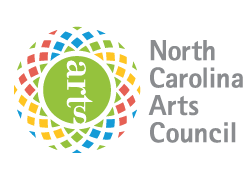
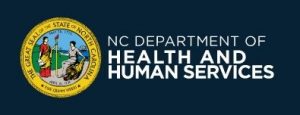
GENDER RESOURCES
RACIAL EQUITY RESOURCES

ADDITIONAL RESOURCES
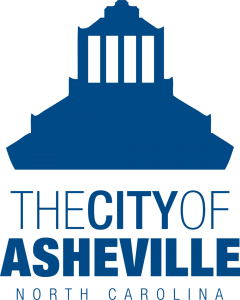
As part of city government, the Office of Equity & Inclusion plays a unique role toward maximizing the access and opportunities that all …


